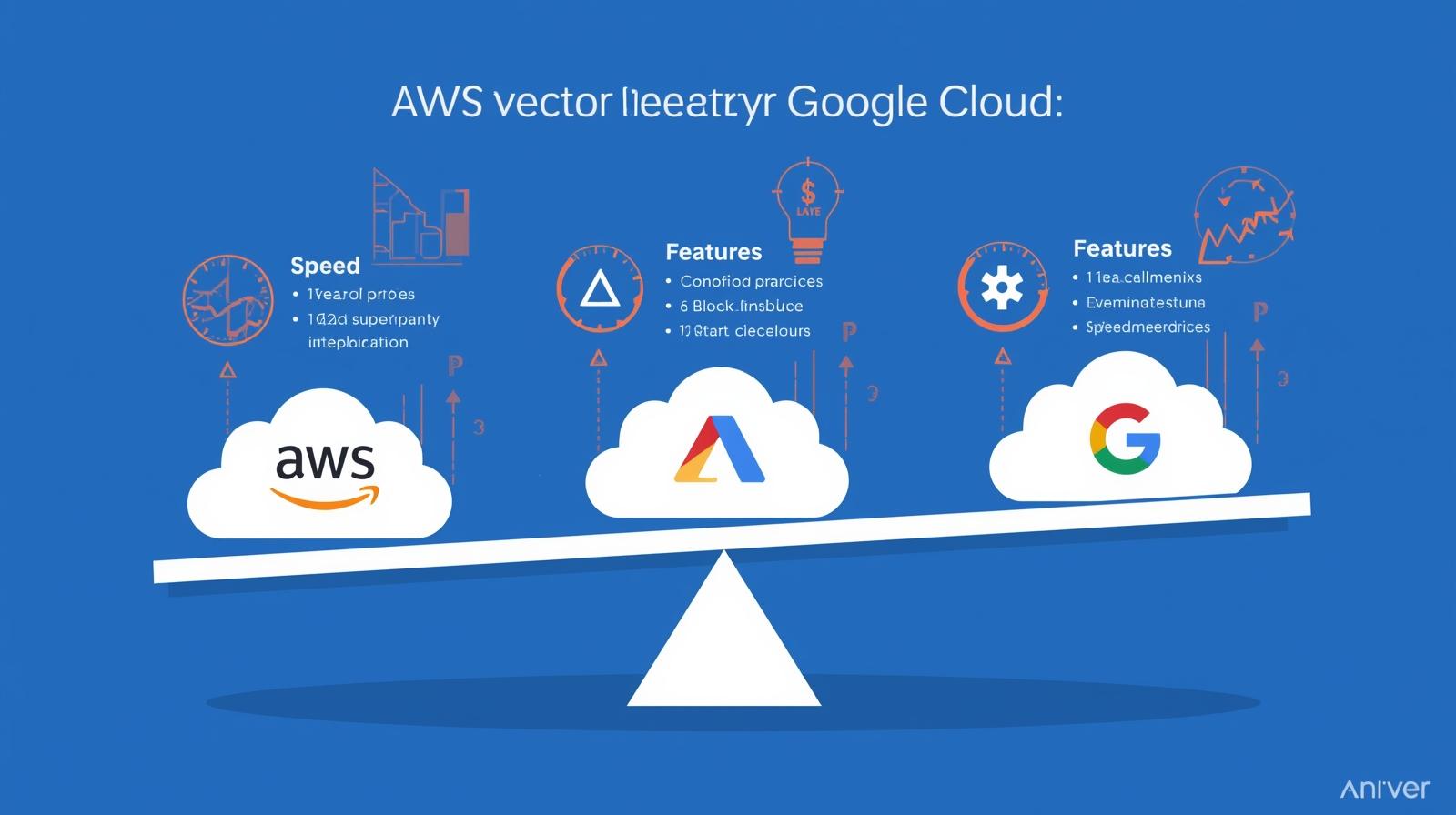Cloud computing is the backbone of modern digital transformation. In 2025, every business — from startups to global enterprises — relies on the cloud to scale operations, improve efficiency, and stay secure in a data-driven world. However, one of the most common questions for developers and business owners alike is: “AWS vs Azure vs Google Cloud — which platform should I start with?”
These three tech giants dominate the global cloud landscape, each with unique strengths, pricing models, and ecosystems. This article compares Amazon Web Services (AWS), Microsoft Azure, and Google Cloud Platform (GCP) to help you decide which one best fits your goals in 2025.
1. AWS – The Industry Leader
Amazon Web Services (AWS) remains the world’s largest and most mature cloud provider, holding over 30% of the global cloud market share in 2025. AWS offers an unmatched range of services, including computing (EC2), storage (S3), databases (RDS), AI (Bedrock), IoT, and developer tools. It’s known for its reliability, scalability, and continuous innovation.
Pros of AWS
- Massive global infrastructure: AWS operates the largest network of data centers worldwide, ensuring low latency and high availability.
- Unmatched scalability: Ideal for startups that plan to grow quickly or enterprises running mission-critical applications.
- Advanced AI and ML tools: Services like Amazon Bedrock and SageMaker simplify building and deploying AI solutions.
Cons of AWS
- Complex pricing model: Understanding AWS billing can be challenging for beginners.
- Steep learning curve: Due to its broad service catalog, new users may find AWS overwhelming at first.
👉 Best for: Large enterprises, developers building scalable applications, and AI-driven workloads.
2. Microsoft Azure – The Enterprise Favorite
Microsoft Azure is the go-to choice for organizations already integrated with Microsoft’s ecosystem. In 2025, Azure continues to grow rapidly thanks to its strong enterprise adoption, hybrid cloud support, and the integration of Microsoft Copilot AI across its services.
Pros of Azure
- Seamless integration with Microsoft 365: Perfect for businesses using Office 365, Windows Server, and Teams.
- Excellent hybrid cloud solutions: Azure Arc and Azure Stack let companies combine on-premises and cloud environments.
- Top-tier security and compliance: Azure meets strict global compliance standards, making it ideal for regulated industries.
Cons of Azure
- Slightly slower interface: Compared to AWS, Azure’s dashboard can feel less responsive.
- Regional service limitations: Some services are available only in select regions.
👉 Best for: Businesses that rely on Microsoft products or need hybrid infrastructure combining cloud and on-prem systems.
3. Google Cloud Platform – The Data & AI Expert
Google Cloud Platform (GCP) may have a smaller market share, but it leads in artificial intelligence, machine learning, and data analytics. In 2025, Google’s AI ecosystem, powered by Gemini AI, Vertex AI, and BigQuery, makes GCP the top choice for data-driven startups and AI developers.
Pros of Google Cloud
- Cutting-edge AI and ML tools: Industry-leading solutions like BigQuery ML and Vertex AI make AI deployment fast and scalable.
- Transparent pricing: GCP’s pricing is straightforward, with clear cost calculators and discounts for sustained usage.
- Open-source and Kubernetes leadership: Google originally created Kubernetes, so GCP offers the best container orchestration and DevOps tools.
Cons of Google Cloud
- Smaller enterprise user base: GCP still trails AWS and Azure in enterprise adoption.
- Limited global data centers: While expanding, its reach is smaller than AWS’s global footprint.
👉 Best for: Startups, data scientists, AI researchers, and developers focused on analytics and machine learning.
4. Pricing Overview (2025 Snapshot)
Pricing is often a deciding factor when comparing AWS vs Azure vs Google Cloud. While prices can vary by region and usage, here’s a snapshot of average 2025 costs for basic cloud services:
| Service | AWS | Azure | Google Cloud |
|---|---|---|---|
| Compute (basic instance/hour) | ~$0.023 | ~$0.021 | ~$0.020 |
| Storage (per GB/month) | ~$0.025 | ~$0.024 | ~$0.020 |
- Google Cloud generally offers the lowest entry-level pricing.
- Azure balances affordability and enterprise-grade features.
- AWS is slightly more expensive but provides the broadest range of services and reliability.
Keep in mind that all three platforms provide free tiers, discounted reserved instances, and pay-as-you-go flexibility, allowing you to control costs based on actual usage.
5. Performance and Reliability
When comparing AWS vs Azure vs Google Cloud, all three deliver excellent uptime and performance.
- AWS: Known for exceptional reliability and fast scaling across regions.
- Azure: Offers solid hybrid performance, especially for enterprises using Windows-based workloads.
- Google Cloud: Excels in data processing and analytics performance due to Google’s infrastructure and AI acceleration.
6. Which Cloud Platform Should You Start With in 2025?
Your choice ultimately depends on your business goals, technical expertise, and project type:
- Choose AWS if you want scalability, reliability, and the widest range of services. Perfect for global enterprises and tech startups planning to scale fast.
- Choose Azure if your business already uses Microsoft tools and you need hybrid or enterprise integration.
- Choose Google Cloud if your focus is AI, machine learning, or data analytics-driven innovation.
Conclusion: AWS vs Azure vs Google Cloud – The Verdict
In 2025, there’s no one-size-fits-all winner in the AWS vs Azure vs Google Cloud debate. Each platform excels in its niche:
- AWS: Best for scalability and global enterprise reliability.
- Azure: Best for businesses in the Microsoft ecosystem.
- Google Cloud: Best for AI, data, and modern app development.
If you’re just starting your cloud journey, consider experimenting with all three platforms using their free tiers. This hands-on experience will help you understand which ecosystem aligns best with your project’s needs and long-term vision. Next Article
